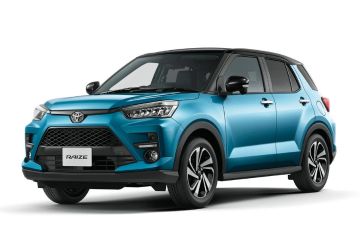![Does NCAP Actually Work? 01]()
Think of Subic. It is my wife and I's favorite quick escape from the hustle and bustle of Manila. It offers lovely beaches, a knack for history and military heritage, and a great place to drive around. Have you ever gone to Subic? Have you ever stopped at every stop sign, before every zebra crosswalk, and before every intersection? Have you followed all road markings: the solid white line, the double solid yellows, et cetera? Do you remember how efficient it is to follow the rule: first to stop, first to go? If you think about it, we automatically transform into another person with different driving behavior and habits when we go to Subic. Is it because the traffic officers are around and they might watch every moment we drive in their city? If yes, then I think you get the first thing about having a system of traffic cameras monitoring drivers like NCAP.
NCAP or 'No Contact Apprehension Program,' is a traffic enforcement scheme where motorists are surveilled via a system of traffic cameras and artificial intelligence (they say) in some cities to check for drivers' compliance with driving rules, regulations, and standards. Usually, the MMDA personnel, the Highway Patrol Group or HPG (usually in EDSA), and the local traffic officers in every Metro Manila City do this. You bet that the old system is inconsistent and can be mistaken for an elaborate scheme for corruption and bribery that some implementors of traffic laws and the offenders participate in.
![Does NCAP Actually Work? 02]()
In modern cities worldwide, traffic cameras are set up, and you can imagine that these are hated, too. It's because, in the back of our minds as drivers, we need to drive as obedient as possible to traffic standards. This is one major thing that irritates most road users, or humans – we don't like being watched.
Of course, people who are against it will say the amounts collected for the traffic fines are excessive. The penalties are outrageous because we must learn a lesson and avoid making the same mistake again. Imagine doing something wrong and only paying 100 pesos for the fine. Of course, we know that doing it again won't hurt as badly. But I agree that many minimum-wage or boundary-based public utility vehicle drivers and private car drivers can be robbed blind. So we must make sure our driving is up to standard.
On the lack of street signs, yes, this is real. There could also be bad road conditions or blurred road lines, and there are even potholes everywhere, which drivers must go through every day. Yes, these are valid factors, but they are also alibis – palusot – which actual erring drivers use when caught with a traffic violation.
Other drivers see the benefit of NCAP. They feel that the roads are safer and that no balasubas or rude drivers will ever get away with a traffic violation. Some local city governments tend to agree. More than six thousand violations are recorded in the first week of NCAP implementation in Quezon City alone. In Manila, traffic officers reported a decrease in traffic violations in August 2021 after its implementation in the said city in December 2020. Paranaque, one of the first to implement NCAP, noted in 2018 that traffic violations were cut by 20%. Other towns like Valenzuela and San Juan also implement NCAP. Other towns inside and outside Metro Manila might follow suit, while the MMDA asserts it implemented NCAP years ago. Still, a petition to stop its implementation has recently been elevated to the Supreme Court.
People don't like NCAP. It might be a ruse. It might not be what it claims to be, according to some members of civil society groups like Pilipino Society and Development Advocates Commuter-Consumer (Pasadena CC), who allege that the system is flawed in many different ways, like the lack of intelligence in the algorithms and AI which monitors traffic violations in cameras and things that should be improved in the system.
While I accept what many people say about the NCAP, I also think that we say these things because the system needs refinement, and a lot of constructive input is required. I also believe that we should check ourselves as drivers because a few things are lacking in our driver education, or we are just hard-headed fools who think we are characters in movies like Mad Max. We hate the NCAP because we hate being called out on our driving practices and reminded of them.
![Does NCAP Actually Work? 01]()
Whether NCAP continues or not, we should have a deep reflection on our driving practices. Our skills and behavior as drivers or riders should improve while the NCAP system improves. Because, if you think about it, how can we drive well in Subic but not in Metro Manila? How can we follow all rules and regulations when we go abroad but behave like lunatics in our own country?
Surveillance like NCAP should work until driver behavior is altered. Driving discipline should become part of our subconscious. It should be second nature to drive like civilized, modern humans, even in situations requiring out-of-sight compliance.
Also Read: To Hail a Ride or to Own a Car? Which makes more sense?






